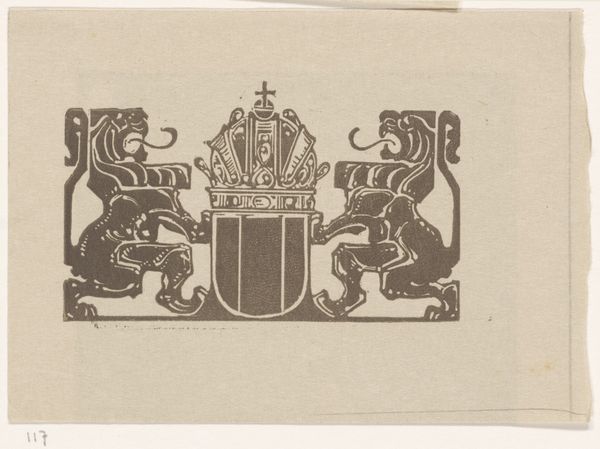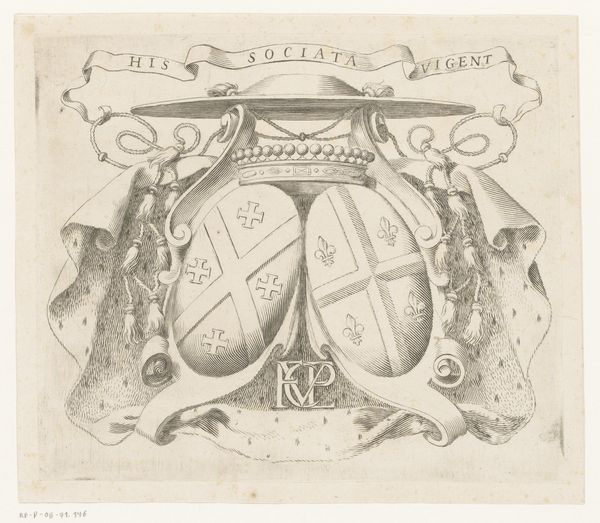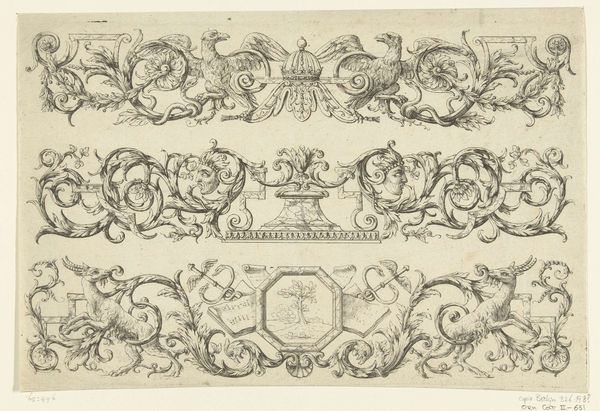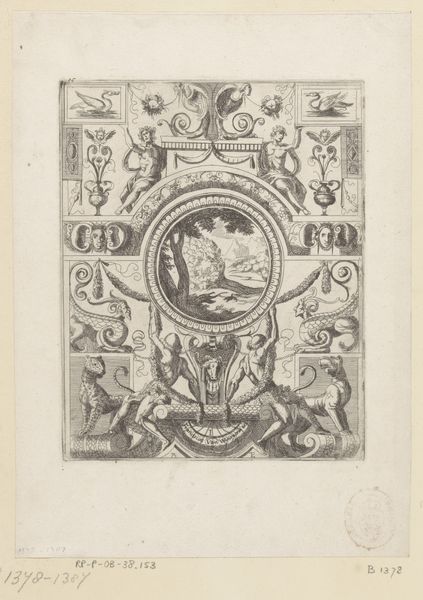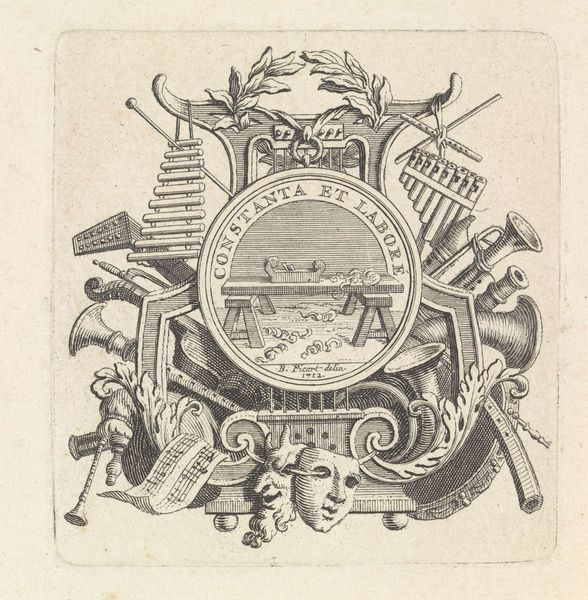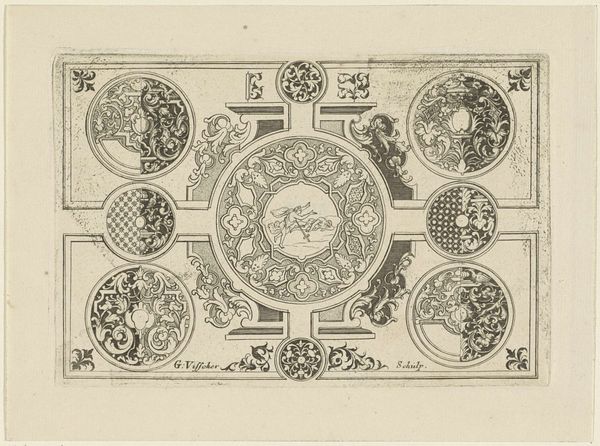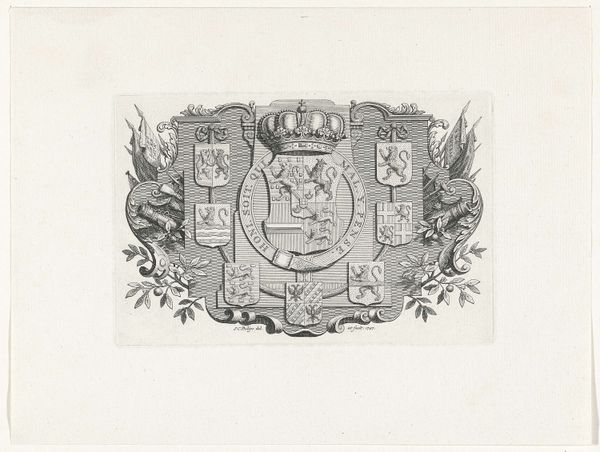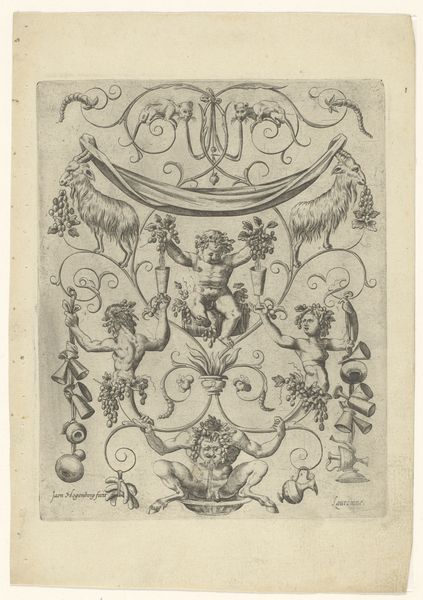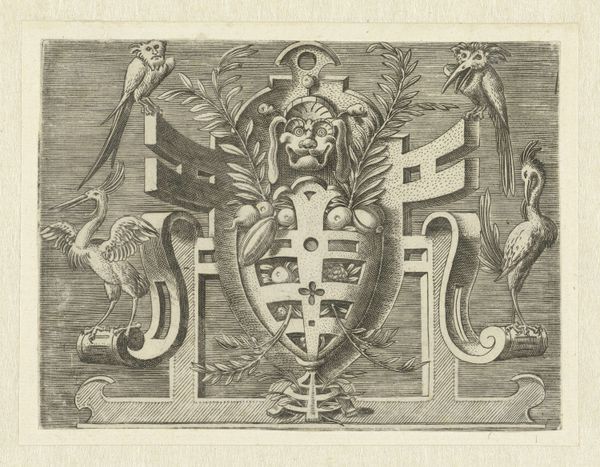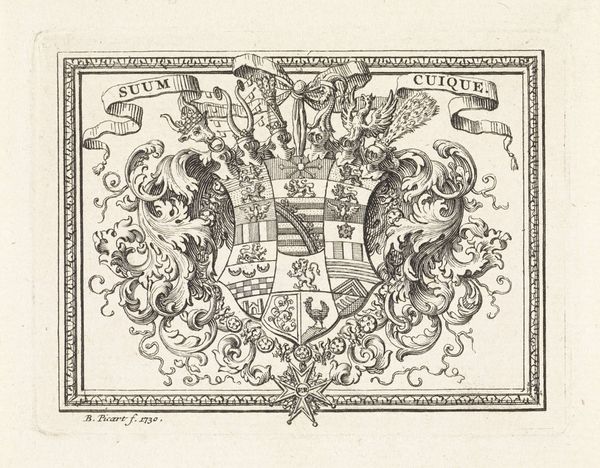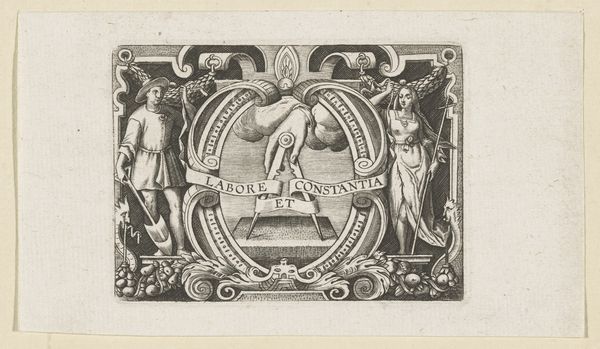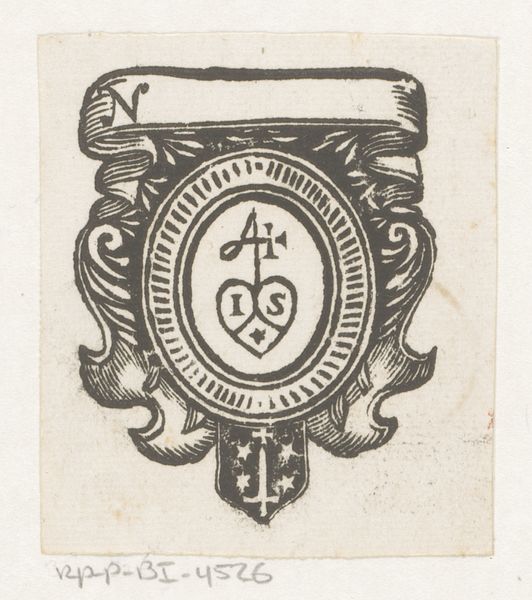
print, pen, engraving
#
portrait
#
baroque
# print
#
old engraving style
#
caricature
#
pen-ink sketch
#
limited contrast and shading
#
pen
#
history-painting
#
engraving
Dimensions: height 65 mm, width 166 mm
Copyright: Rijks Museum: Open Domain
Curator: Immediately, this print, "Portret van Thomas Bodley," attributed to Michael Burghers and dating between 1673 and 1692, strikes me as deeply formal. There's a real sense of authority emanating from these portraits. Editor: Yes, I see that formality too, but it’s tempered by the slightly cartoonish quality. Those faces are highly individualized, bordering on caricature, almost like political cartoons of the period. The pen-and-ink style adds to that impression. It's an engraving, of course, but with that illustrative quality. Curator: I see it as a considered memorial, not just a political cartoon. The symmetry, the heraldic shield at the center with the cherubic figures... those angels aren’t there just to fill space. They suggest a link to the divine, a sanctioning of Bodley's importance. Heraldry itself carries such deep symbolic weight; what do you think it conveys in this context? Editor: Absolutely, that heraldry is key to situating Bodley within the socio-political structure of his time. The coat of arms connects him to a specific lineage and legacy, placing him firmly within the ruling class. Those oval frames feel less about artistic innovation and more about emphasizing status. It's about visually encoding power. Curator: Right, and the deliberate, precise lettering framing the portraits. They echo ancient Roman inscriptions, classical ideals, associating him with a tradition of learning and civic virtue. It’s like embedding him within a pantheon of worthy figures. He's not just anyone; he's presented as an exemplary man of his age, now being looked back at through the lense of 1673-1692. Editor: And this engraving is functioning as propaganda, ensuring that legacy continues to shape public perception. Burghers, here, serves less as an "artist" expressing his individual vision and more as a craftsman solidifying a specific, powerful narrative. Curator: I appreciate how the work's historical placement emphasizes that, then. How art doesn’t emerge in a vacuum. Editor: Precisely. Seeing beyond aesthetic pleasure and examining the power dynamics embedded in it helps me see the cultural project it supported at that time.
Comments
No comments
Be the first to comment and join the conversation on the ultimate creative platform.
